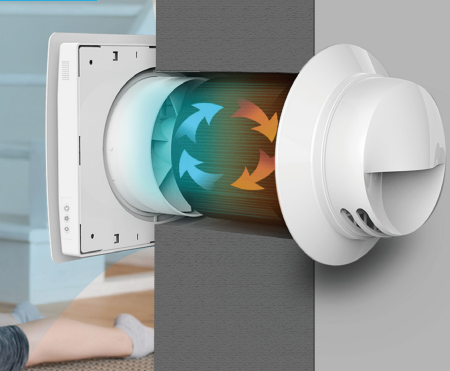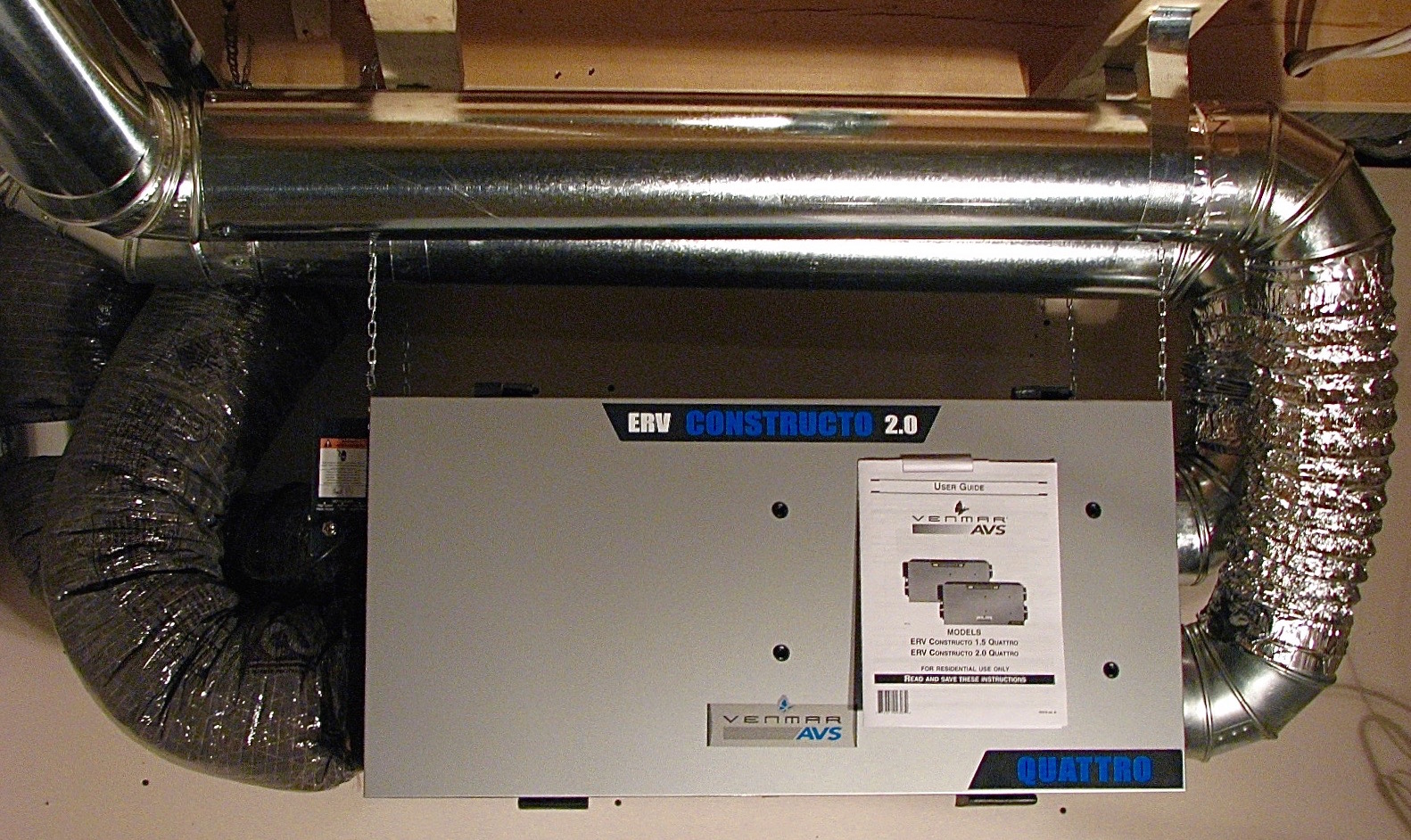Introducing the Key Benefits and Uses of Heat Recovery Ventilation in Sustainable Design
Heat Recovery Ventilation (HRV) systems play a vital duty in sustainable style. They help with a continual exchange of stagnant indoor air with fresh exterior air, considerably enhancing interior air high quality. HRVs contribute to power efficiency by reclaiming warmth from tired air, which can lower utility prices. Comprehending the multifaceted benefits and applications of HRVs reveals their relevance in contemporary architecture. What other advantages do these systems supply in the pursuit of sustainability?
Recognizing Heat Recovery Ventilation Solutions
Heat recovery ventilation (HRV) systems are designed to improve interior air quality while decreasing energy loss. These systems make use of a mechanical air flow method to exchange stagnant interior air with fresh exterior air, making certain a continuous supply of tidy air. By catching warm from the exhaust air, HRVs prerequisite incoming air, minimizing the demand on heating and cooling down systems. This process not just enhances thermal convenience yet also adds to power efficiency in domestic and commercial structures. In addition, HRV systems aid manage humidity degrees and decrease indoor pollutants, promoting a healthier living atmosphere. Their strategic application is necessary for attaining sustainable design objectives, as they offer a balance in between energy conservation and resident well-being.
Just How HRV Equipment Job
While several may be acquainted with ventilation systems, recognizing just how warmth recovery air flow (HRV) systems run is crucial for appreciating their advantages. HRV systems function by trading stale indoor air with fresh outside air while transferring heat in between the 2 streams. This procedure takes place in a warm exchanger, where warm from the outward bound air heats the incoming air during colder months, decreasing energy loss. Conversely, in warmer months, the system can cool down inbound air using the cooler outgoing air. HRVs are geared up with fans to facilitate air flow and filters to eliminate particulates, making certain a constant, balanced ventilation procedure. This ingenious design not only improves energy performance yet also adds to preserving a comfy interior environment.
Enhancing Indoor Air High Quality
Indoor air high quality can considerably influence health and wellness and well-being, making efficient air flow important in contemporary homes. Heat Recovery Ventilation (HRV) systems play a vital duty in preserving interior air quality by continuously trading stagnant indoor air with fresh exterior air. This procedure not just lowers air-borne pollutants yet additionally decreases humidity levels, which can result in mold and mildew growth and respiratory system issues. HRV systems filter inbound air, eliminating irritants and particulates, consequently giving a much healthier living setting. Furthermore, these systems assist eliminate smells and volatile organic compounds (VOCs) typically found in home items. By making certain a constant flow of clean air, HRV systems add to a total enhanced interior environment, promoting comfort and health for occupants.
Power Efficiency and Expense Savings
Energy performance attracts attention as a considerable advantage of Heat Recovery Ventilation (HRV) systems. By catching and recycling the heat from worn down interior air, HRVs reduce the power needed for heating inbound fresh air, leading to minimized power consumption. This effectiveness equates right into reduced energy bills, providing significant price financial savings for property owners and services alike. In addition, HRV systems often get approved for power effectiveness rewards and refunds, additionally improving their financial appeal. In time, the initial investment in HRV innovation can result in a favorable return on financial investment with reduced energy expenditures. Subsequently, the integration of HRV systems not just advertises lasting style but additionally supplies a sensible remedy for accomplishing long-term power savings and economic benefits.
Environmental Benefits of HRV

A wide range of ecological benefits emerges from the execution of Heat Recovery Ventilation (HRV) systems. By efficiently transferring heat from exhaust air to inbound fresh air, HRVs substantially lower the power needed for home heating and cooling down areas. This energy performance equates to lower greenhouse gas emissions, adding to a reduction in the general carbon footprint of buildings. In addition, HRV systems boost interior air high quality by continually distributing fresh air, thereby lowering the focus of indoor toxins and allergens. The decrease in power consumption aids in conserving all-natural resources, making HRVs a crucial component of sustainable style. Generally, the ecological advantages of HRVs play a vital duty in promoting a healthier planet and promoting eco-friendly building techniques.
Versatile Applications in Modern Architecture
Heat recovery ventilation (HRV) systems are progressively being integrated into both property and industrial architectural projects. In domestic setups, HRVs boost interior air quality while taking full advantage of power performance. In industrial rooms, these systems enhance ventilation methods, showing their adaptability in modern architectural applications.
Residential Projects Assimilation
While modern-day design increasingly highlights sustainability, the integration of warm healing air flow systems in household tasks has become a practical option for enhancing indoor air quality and energy effectiveness. These systems effectively transfer warm from exhaust air to inbound fresh air, decreasing power loss and minimizing heating or cooling down demands. In brand-new builds and retrofits alike, heat recuperation air flow can be perfectly incorporated, offering homeowners with a healthier living atmosphere while lowering energy prices. Additionally, with boosting awareness of ecological impacts, even more engineers and building contractors are identifying the lasting advantages of these systems. Because of this, heat recovery ventilation has actually come to be a vital element of sustainable residential design, showcasing flexibility and commitment to eco-friendly practices.
Commercial Spaces Optimization
As modern-day industrial spaces develop to fulfill the visit this web-site needs of sustainability and efficiency, the execution of warm recuperation ventilation systems arises as a crucial technique for optimizing interior environments. These systems help with the exchange of stagnant indoor air with fresh exterior air while redeeming heat, substantially minimizing power intake. This not just boosts comfort for occupants however also assists in decreasing operational prices. Versatile applications can be observed in offices, retail rooms, and educational establishments, where air top quality and temperature level control are vital. Additionally, incorporating heat recuperation air flow lines up with environment-friendly building accreditations, even more advertising environmental obligation. Eventually, adopting such systems in industrial architecture not only adds to sustainability objectives but likewise fosters much healthier, a lot more effective rooms for customers.
Incorporating HRV Into Sustainable Design Practices
Integrating heat recuperation air flow (HRV) systems right into sustainable design practices uses considerable advantages in power efficiency and indoor air high quality. By making use of HRV, designers can create affordable services that not only reduce energy intake yet also enhance the overall convenience of interior atmospheres. This positioning with sustainability goals positions HRV as an important component in modern building methods.
Energy Efficiency Improvement
By including warm recovery air flow (HRV) systems into lasting style methods, architects and builders can substantially improve energy efficiency in contemporary buildings. HRV systems function by recording warm from outgoing stagnant air and transferring it to inbound fresh air, lessening the power needed for heating or cooling down interior areas. This process not just minimizes reliance on traditional a/c systems yet likewise decreases total power consumption. Additionally, HRV systems can help keep a consistent indoor temperature, lowering peak energy demands. By incorporating these systems, structures can accomplish significant reductions in energy expenses and carbon impacts, lining up with sustainability goals. Inevitably, HRV modern technology stands for a functional service for improving energy performance in the developed environment, promoting more liable resource use.
Indoor Air Quality Renovation
How can warmth recuperation ventilation (HRV) systems add to premium interior air top quality in modern-day structures? HRV systems effectively exchange stagnant indoor air with fresh exterior air while recovering warmth power, reducing temperature variations. This process minimizes the concentration of indoor contaminants, such as unstable natural substances (VOCs), irritants, and dampness, which can weaken air high quality and influence resident health. By keeping optimal moisture levels and ensuring a continuous supply of clean air, HRVs help create a healthier interior setting. Additionally, these systems can be integrated into sustainable design practices, advertising power effectiveness along with boosted air top quality. HRV Heat Recovery Ventilation. HRV innovation plays a crucial function in advancing overall resident comfort and wellness in contemporary building styles.
Economical Design Solutions

Regularly Asked Questions
What Upkeep Is Required for Heat Recovery Ventilation Solutions?

Maintenance for warmth recovery ventilation systems typically entails routine filter substitutes, cleaning of warm exchangers, evaluation of followers and ducts, and ensuring correct drainage. These tasks help keep efficiency and extend the system's life-span in time.
Can HRV Systems Be Mounted in Existing Structures?
Heat recovery ventilation systems can without a doubt be installed in existing structures. HRV Heat Recovery Ventilation. Retrofitting needs careful preparation and assessment of the building's design, ensuring compatibility with existing systems while click to find out more making the most of power effectiveness and interior air top quality
How Do HRV Solution Influence Noise Levels Inside?
HRV systems can affect indoor noise levels by presenting audio from outside resources through ventilation. High-grade installments often incorporate sound-dampening features, decreasing sound influence while giving reliable air exchange and maintaining comfort inside your home.
Exist Any Type Of Drawbacks to Utilizing HRV Solutions?
The drawbacks of making use of HRV systems consist of prospective high first costs, maintenance obstacles, and the opportunity of minimized indoor air quality if filters are sporadically altered, which could lead to issues with moisture levels.
Just how Do I Select the Right HRV System for My Requirements?
Choosing the appropriate warm healing ventilation system entails examining particular needs, such as developing dimension, environment, and power efficiency goals. In addition, reviewing system attributes, setup demands, and maintenance factors to consider is necessary for peak performance and satisfaction.